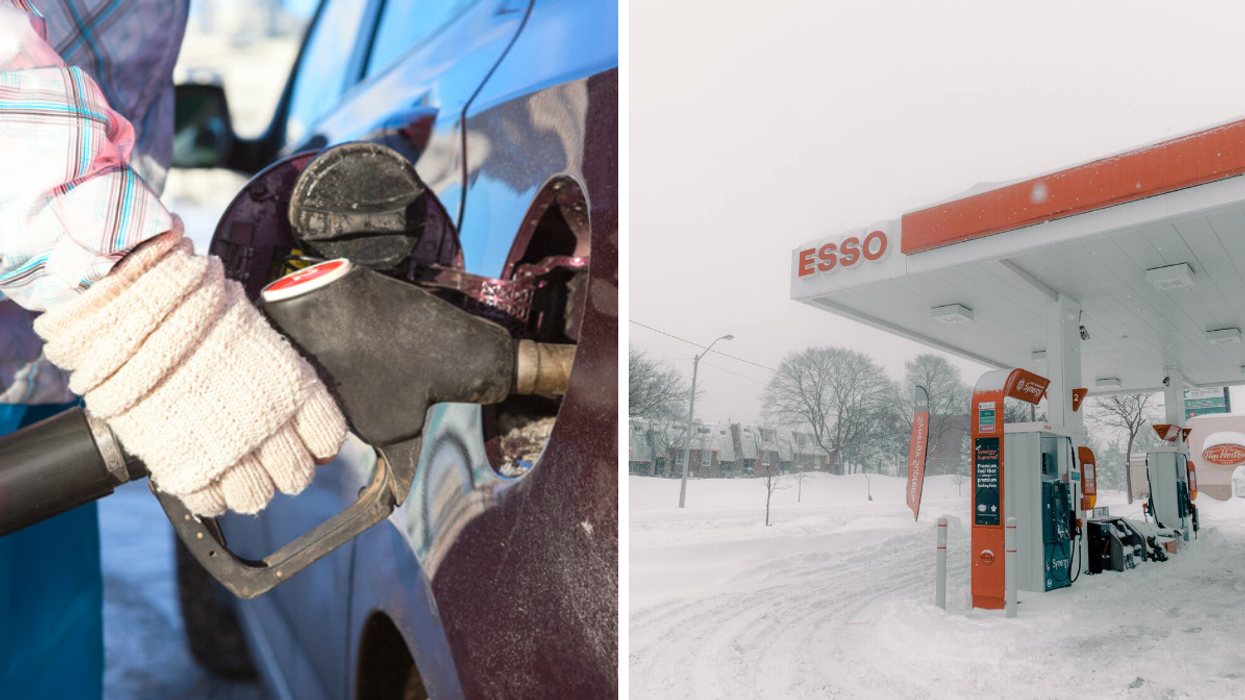Gas Prices Have Gone Up In Six Provinces & Here's How Much Everyone Is Paying At The Pump
But there are some spots where it actually went down. 👀

A person fuels up their car wearing mittens. Right: An Esso petrol pump.
It's no secret that gas prices in Canada are in a constant state of flux.
After peaking last year at over $2 per litre, things have thankfully calmed down, with a much-need drop experienced in December.
However, it looks like gas prices may be on the rise again in early 2023.
According to CAA, gas prices have actually gone up in six provinces across the country.
British Columbia, New Brunswick, Newfoundland and Labrador, Nova Scotia, Prince Edward Island and Saskatchewan all saw an increase in fuel prices in January compared to a week ago.
Of these, it looks like British Columbia is currently paying the highest rate of 167.1 cents per litre, an increase from last week's 163.8 per litre.
Prices also picked up in Newfoundland and Labrador, from an average of 162.8 cents per litre one week ago, to 164.2 cents per litre.
And Prince Edward Island spotted an increase to 158.5 cents per litre from 157.9 cents per litre a week ago.
In New Brunswick, the price of fuel today is 156.7 cents per litre, a marginal increase from last week's rate of 156.1 cents per litre.
Nova Scotian prices increased slightly from 148.4 cents per litre a week ago to 148.5 cents per litre today, while Saskatchewan saw an increase from 144.8 per litre to 146.5 per litre today.
If you happen to live in Ontario, Manitoba, Alberta and Quebec, the cost of gas actually went down between around 2 to 7 cents week over week.
At the pump, the current price in Ontario is 138.7, 145.3 in Manitoba, 125.4 in Alberta and in Quebec, it's 153.
In an interview with Narcity, gas analyst Dan McTeague said that we could see a significant spike in prices this year and could even hit $2 a litre.
How is the price of gas determined?
According to the CAA, there are loads of factors that influence how much Canadians pay at the pump.
This includes supply and demand, crude oil prices, the cost of refining crude as well as taxes, and the local market.
This article's cover image was used for illustrative purposes only.
